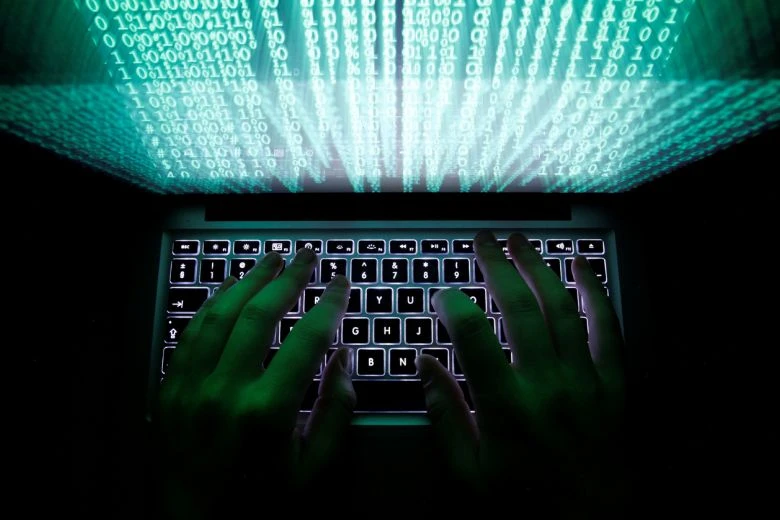
The accounts have been used to promote content attacking critics of the Chinese government and to spread conspiracy theories blaming the U.S. for the origins of virus, according to Benjamin Strick, who specializes in analyzing information operations on social media websites.
Between April 25 and May 3, Strick said he identified more than 1,000 accounts on Twitter that were associated with the Chinese disinformation effort, as well as more than 50 different pages on Facebook. He estimated that 300 or 400 new Twitter accounts were joining the network each day, as part of the Chinese campaign.
“The network has evolved and is still growing,” said Strick, in an interview. “I believe it’s a state-backed Chinese campaign.”
In research published last week on the investigative website Bellingcat, Strick described the operation as a “well-structured information campaign” that was working in a coordinated way “to skew the narrative around varying topics, and to push set agendas.”
The operation bears some of the same hallmarks as a network of 900 accounts that Twitter uncovered in August last year, which the company identified as “a significant state-backed information operation focused on the situation in Hong Kong,” operated from mainland China.
Ben Nimmo, director of investigations at Graphika Inc., said the accounts identified by Strick appeared to be linked to a network known as “Spamouflage Dragon,” which was previously identified promoting attacks on Hong Kong protesters by using hijacked and fake accounts on YouTube, Twitter, and Facebook.
In a September 2019 report, Graphika described Spamouflague Dragon as “an active and prolific, but ultimately low-impact, cross-platform political spam network,” whose actions “appeared designed to support the Chinese government and discredit its critics, both at home and abroad.”
China’s Ministry of Foreign Affairs didn’t respond to an email seeking comment.
A Twitter Inc. spokesperson said in a statement that it was working to “pro-actively monitor” the platform “to identify attempts at platform manipulation and mitigate them.”
“If we identify information campaigns on our service that we can reliably attribute to state-backed activity either domestic or foreign-led, we will disclose them,” the spokesperson said.
Facebook Inc. didn’t respond to a request for comment.
Strick said many of the accounts were focused on attacking Guo Wengui, an exiled Chinese businessman, now based in the U.S., who is a fierce critic of the ruling Communist Party government. The accounts were also promoting baseless claims linking vaping and Covid-19, as well as amplifying conspiracy theories about biosecurity incidents in the U.S. under the hashtags #coronavirus and #TruthAboutCovid.
The accounts also promoted content that included criticism of pro-democracy protesters in Hong Kong.
Many of the accounts on Twitter, he said, had Chinese names and posted content in both English and Chinese, while other accounts in the network used Russian account names written in the Cyrillic alphabet, possibly to deflect attribution of the accounts away from China.
On May 8, the U.S. State Department’s Global Engagement Center said it had identified “a new network of inauthentic accounts” on Twitter, which it said we “created with the intent to amplify Chinese propaganda and disinformation.” It isn’t clear if the accounts were the same ones identified by Strick.
Lea Gabrielle, coordinator of the Global Engagement Center, said that China was “adopting Russian-style disinformation techniques” to sow confusion and to try to convince people that Covid-19 didn’t originate in China. That trend, she said, had escalated between March and May.
“Beijing has engaged in an aggressive information campaign to try and reshape the global narrative around Covid,” said Gabrielle. “It’s doing this in attempt to make the world see China as the global leader in the response rather than the source of the pandemic.”
Twitter, however, cast doubt on the State Department’s claim, saying an initial review of 5,000 accounts found no indication the accounts were unduly deferential or supportive of Chinese positions.
Vanessa Molter, a graduate research assistant at the Stanford Internet Observatory, said more evidence is needed to confirm covert Chinese government-backed information operations on social media platforms. Confirmation would require internal information, such as IP addresses of specific accounts, which isn’t publicly available to analyze. “At the very least,” she said, “it’s clear we are seeing significant patriotic trolling” from Chinese accounts.
More obvious was an overt propaganda campaign from Chinese state media on social media, she said. The country’s organizations such as China Central Television and China Global Television Network have been promoting content on Facebook, she said, through hundreds of paid advertisements that have lauded the Chinese government’s response to the pandemic.
In research published in March, Molter concluded that the Chinese government had used its state media apparatus to “control and the narrative and deflect blame since the start” of the coronavirus outbreak, domestically and abroad.
Elsa Kania, an adjunct senior fellow at the Center for a New American Security, said China’s information operations had expanded in scope in recent years, though it was difficult to assess their impact and efficacy.
“Evidently, Beijing has observed and started to leverage lessons learned from Russia’s exploitation of social media,” said Kania. “We might expect to see these efforts become more targeted and prevalent going forward.”




















